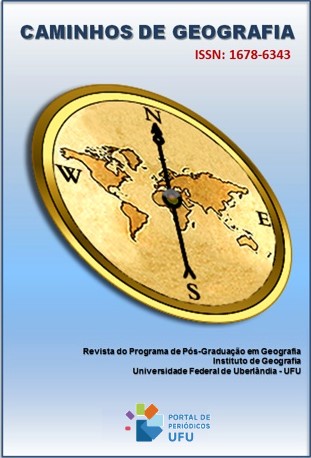THE NETWORK OF TOURIST PLACES IN THE LITORAL NORTE OF THE COSTA DAS DUNAS POLO, RIO GRANDE DO NORTE
DOI:
https://doi.org/10.14393/RCG249365208Keywords:
Rio Grande do Norte, Coast of the Dunes Pole, North Coast, Network of Tourist PlacesAbstract
This article analyzes the network of tourist places in the North Coast region of the Polo Costa das Dunas, Rio Grande do Norte, based on the concept of urban network and used territory. In this region, the territory used takes the spatial form of an urban network that weaves unequal relationships and combined with the tourism activities of the region concentrated on the Central Coast of the tourist pole in question from the tour itinerary, carried out both by buggys and by tourism buses which connects tourists staying in Natal to tourist places on the North Coast. The analysis was carried out from field visits, between January and February 2019, questionnaires with tourists and residents who were visiting tourist places, resulting in 89 questionnaires, and as complementary data, the 2019 edition of the FECOMÉRCIO RN annual report. The dependence of tourist places on the North Coast with the center of the network is directly associated with derived tourist emission, this occurs due to the concentration of lodging facilities and tourist infrastructure in a single point, Natal. The independence of tourist places will be possible from the valorization of the inns and the improvement of the infrastructure.
Downloads
Downloads
Published
How to Cite
Issue
Section
License
Copyright (c) 2023 José Alexandre Berto de Almada

This work is licensed under a Creative Commons Attribution-NonCommercial-NoDerivatives 4.0 International License.
Autores que publicam nesta revista concordam com os seguintes termos: a) Autores mantém os direitos autorais e concedem à revista o direito de primeira publicação, com o trabalho licenciado sob a Creative Commons Atribuição-NãoComercial-SemDerivações 4.0 Internacional. b) Autores têm permissão e são estimulados a publicar e distribuir seu trabalho online (ex.: em repositórios institucionais ou na sua página pessoal), já que isso pode gerar alterações produtivas, bem como aumentar o impacto e a citação do trabalho publicado. c) Em virtude de aparecerem nesta revista de acesso público, os artigos são de uso gratuito, com atribuições próprias, em aplicações educacionais e não-comerciais.











